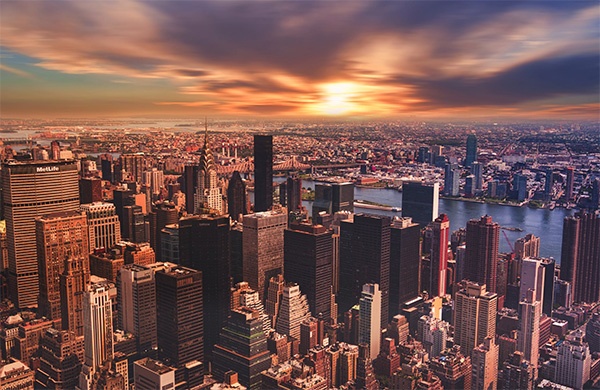In the past decade alone, over 50,000 buildings and nearly two billion square feet of real estate have been developed to standards that are considered “High Performance” or “Living” buildings. As the trend to build these type of future-proof buildings continues, experts contend that this strategy is more than environmentally conscious. Research also supports that it is financially compelling. High performance buildings that engage the occupants are now in greater demand than ever by sophisticated tenants and investors alike. Developers and architects must continue to educate the broader market on the barriers and benefits to this cutting-edge asset class.
Owner developed and occupied buildings can more easily justify the incorporation of high-performance building features into new or existing construction. In the event that a high performance building has real or perceived construction cost premiums, an owner- occupier can often more readily recover such upfront investments through state and federal incentive programs and other commonly recognized hard and soft benefits (cost savings, productivity gains, improved occupant health, etc.) that are directly recovered by the investment entity.
Developers or owners of multi-tenant office buildings developments encounter both perceived and real barriers that often prevent the inclusion of high-performance, climactic responsive features in new or retrofit projects. Integrated design, proper lease structures and intelligent building operations greatly aid to help overcome these barriers and allow the benefits of high- performance buildings to be realized and shared amongst various stakeholders including investors.
Developers that successfully incorporate “sustainable” design and operations into a project realize that it requires a new perspective and the integration of thoughtful project design, analysis, marketing, and measurement and verification processes. In 2013, GRESB (Global Real Estate Sustainability Benchmark) reported that 27% of new office construction in the US was validated with a green building certification. Upfront investments required to hit LEED-type ratings can easily be financed and justified through higher rents, operational savings and incentives. However, all of these factors must be quantifiable and qualified by both the owner’s team and the tenants that will occupy and benefit from the space. Both owner and tenant should receive triple bottom line incentives (environmental, financial and social) to create and operate high-performance spaces.
Ultimately, developers of high-performance buildings will garner higher rents, a lower beta and lower CAP rates on the investment quality of the asset, while tenants will pay less in total occupancy costs for higher quality spaces. Thus creating a perfect opportunity for developers to build well- designed projects that will be attractive to tenants and to debt and equity investors alike. The benefits to this approach are becoming increasingly measureable and will continue to drive the demand and the asset values of sustainable developments.
“Developers of high- performance buildings will garner higher rents, a lower beta and lower CAP rates on the investment quality of the asset, while tenants will pay less in total occupancy costs for higher quality spaces.”
Environmental Benefits
- Reduce greenhouse gas emissions
- Enhancement and protection of ecosystems and biodiversity
- Improved air and water quality
- Reduced solid waste
- Conservation of natural resources
- Dramatically lower energy/water consumption
Economic Benefits
- Reduced operating costs
- Enhanced asset value and profits
- Improvements in employee productivity and satisfaction
- Optimized economic performance throughout the building’s life cycle
- Increased resiliency against volatile energy markets
- Building and its operations are “future-proofed” against being obsolete
- An emphasis on real energy savings will also improve financing options for buildings that can deliver a clear return.
Social & Community Benefits
- Improved air, thermal, and acoustic environments
- Enhanced occupant comfort and health
- Minimized strain on local infrastructure
- Contributions to overall quality of life
- Urban aesthetics
- CSR objectives are critical in corporate governance by institutional investors and high-quality tenants.
Financial Benefits
- Lower Operating Expenses>NOI
- Higher rental rates (5% to 10% premiums, (Kok, Miller and Morris 2012)=>NOI
- Lower Cap rates=>Value or NAV (Capitalization rates in Energy Star properties were lower by 55-100 basis points, (Miller 2008))
- >NOI and lower Cap Rates leads to even higher >NAV
- Greater leasing velocity for new developments (Kok, Miller, Morris 2012)
- Institutional investors apply a lower beta for an investment in a sustainable asset since lease turnover is lower at lease end, higher occupancy rates and less volatility in energy exposure. (Deutche Bank)
- Greater demand from institutions to finance both debt and equity in sustainable assets (Deutche Bank 2014)
- Asset premium of 25% for LEED certified buildings and 26% for Energy Star. (Franz Fuerst, Real Estate Economics, 2011) or closer to 10% (Kok, Miller and Morris 2012)
Regulatory Benefits
- High performance buildings stay ahead of continuing state and local regulatory requirements
- Comply with Title 24 in State of California
- Energy reporting laws (e.g. New York City, Californian, Washington State, Washington D.C., Montgomery County, MD, Philadelphia).
- Building performance is ahead of current regulation but regulations have a history of catching up
Resource Benefits
- Consume 25% less energy and 11% less water (USGBC, 2013)
- Have 19% lower maintenance costs
- 27% higher occupant satisfaction
- 34% lower greenhouse gas emissions
Leasing Benefits
- Vast majority of markets found LEED/high performance office buildings captured an outsized share of absorption relative to their share of the inventory. (Miller, N.G., J. Spivey, and A. Florance)
- 10% Higher Net Effective rent in offices with Energy Star and 9% higher for LEED certified buildings (Eichholtz 2009)
- 3.1% Lease rate premium for LEED buildings (CBRE & the University of San Diego’s Center for Real Estate 2011 Study)
- Sustainable buildings and spaces are strongly required for a variety of tenant types (Biotech, Tech, Law, Fortune 1000 & Government)
Tenant Demands
Savvy and well-represented tenants are willing to pay a premium for space in green buildings because of the lower operating costs, higher worker productivity and reputational benefits associated with the superior environmental performance of green buildings.
Four major trends are impacting the office space design and selection process:
- More collaborative workspaces and functional project teams.
- Move to more standardized workspace.
- Sustainable space with building amenities and lower total cost of ownership (TCO)
- Growing acceptance of telecommuting and working in shared spaces
Changing Regulatory Landscape
Governments and municipalities around the world are continuing to steer policies that respond to challenges posed by global climate change. Building developers, owners, and operators will soon be required to build to higher performance standards. Progressive groups will stay ahead of this trend and create data driven organizational processes that fully leverage the benefits of high performance buildings.
- By 2020 California Title 24 will dramatically impact energy requirement for new construction pushing towards “zero net energy” and by 2030, it will be mandated.
- By 2020 all new construction in the EU must be “nearly zero energy” impact.
- All non-residential buildings offered for sale, lease, or financing larger than 10,000 sq. ft. (July 1, 2014) have to benchmark and disclose their energy use through Energy Star’s Portfolio Manager as mandated by Title 24.
- The International Union of Architects passed the 2050 Imperative at its 2014 World Congress to reduce carbon dioxide emissions from the built environment to zero by mid- century.
About PEFS
PE Facility Solutions, LLC, now under the brand Pristine Environments, manages, maintains and optimizes the performance of mission critical facilities for corporate real estate owners in nearly 100 million square feet of specialized buildings throughout North America. With a broad range of experience across an array of industries, including life sciences/cleanrooms, aerospace, datacenters, oil & gas, luxury retail, sports technology & fitness, and commercial real estate, our organization of over 1,000 professionals keeps our customers’ buildings and facilities operating efficiently, sustainably and on budget.
References
Global Real Estate Sustainability Benchmark, 2012 Report
Eichholtz, Piet M.A., N. Kok, and J.M. Quigley. Doing Well by Doing Good: Green Office Buildings. American Economic Review, 2010, 100:5, 2494–511.
The Economics of Green Building. Working Paper. Berkeley: Berkeley Program on Housing and Urban Policy, 2011. The Economics of Green Building. Review of Economics and Statistics, forthcoming.
Fuerst, F. and P. McAllister. An Investigation of the Effect of Eco-Labeling on Office Occupancy Rates. Journal of Sustainable Real Estate, 2009, 1, 49–64.
Fuerst, F. and P. McAllister. Green Noise or Green Value? Measuring the Effects of Environmental Certification on Office Values. Real Estate Economics, 2011, 39:1, 45–69.
Kok, N. and M.G.J. Jennen. The Impact of Energy Labels and Accessibility on Office Rents. Energy Policy, 2012, 46, 489– 97.
Margolis, J.D. and J.P. Walsh. Misery Loves Company: Rethinking Social Initiatives by Business. Administrative Science Quarterly, 2003, 48:2, 268–305.
Miller, E. and L. Buys. Retrofitting Commercial Office Buildings for Sustainability: Tenants’ Perspectives. Journal of Property Investment and Finance, 2008, 26:6, 552–61.
Miller, N.G., D. Pogue, Q.D. Gough, and S.M. Davis. Green Buildings and Productivity. Journal of Sustainable Real Estate, 2009, 1, 65–89.
Miller, N.G., D. Pogue, J. Saville, and C. Tu. The Operation and Management of Green Buildings in the United States.
Journal of Sustainable Real Estate, 2010, 2, 51–66.
Miller, N.G., J. Spivey, and A. Florance. Does Green Pay Off? Journal of Real Estate Portfolio Management, 2008, 14:4, 385–400.
Nelson, A. and A.J. Rakau. Green Buildings: A Niche Becomes Mainstream. Deutsche Bank Research, 2010. United States Green Building Council (USGBC), 2012 Annual Report



